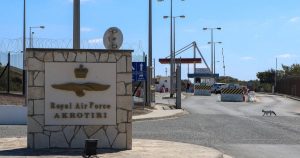On a night marked by aviation incidents, three separate events unfolded, raising concerns about aircraft safety. The most devastating occurred in South Korea, where a Boeing 737-800, Jeju Air Flight 7C2216, crashed upon landing at Muan International Airport, claiming the lives of nearly all 181 passengers and crew onboard. The horrifying footage captured the plane’s final moments as it veered off the runway, struck an embankment, and erupted into a fiery explosion. This tragic event marks South Korea’s worst air disaster in decades, leaving grieving families and a nation in mourning.
Meanwhile, another Boeing 737-800 narrowly escaped disaster in Norway. The KLM Royal Dutch Airlines flight experienced a hydraulic system failure shortly after takeoff from Oslo Airport, forcing the pilots to execute an emergency landing at Sandefjord Torp Airport. Upon touchdown, the aircraft skidded off the runway, coming to rest in the adjacent grassy area. Remarkably, all 182 passengers and crew were safely evacuated without injury. Authorities immediately launched an investigation to determine the cause of the hydraulic failure.
The third incident involved an Air Canada flight, AC2259, en route from St. John’s to Halifax. During landing at Halifax Stanfield International Airport, one of the aircraft’s tires failed to deploy, causing the plane to tilt at a precarious 20-degree angle as it scraped along the tarmac. Sparks ignited, engulfing the left wing in flames as passengers braced for impact. Despite the terrifying ordeal, there were no reported fatalities or major injuries among the 73 passengers and crew. The airport was temporarily shut down while emergency services responded to the scene, and passengers were transported to the terminal by bus. An investigation is underway to ascertain the circumstances surrounding the tire failure.
These three incidents, occurring within a short timeframe, underscore the inherent risks associated with air travel. While the South Korean crash resulted in a catastrophic loss of life, the near-misses in Norway and Canada serve as stark reminders of the importance of robust safety protocols and thorough investigations. The investigations into each of these events will be crucial in identifying any contributing factors, from mechanical failures to pilot error, and implementing necessary measures to prevent similar occurrences in the future.
The harrowing accounts of passengers on the Air Canada flight, witnessing flames erupting from the wing and experiencing the violent shaking of the aircraft, highlight the psychological impact of such near-death experiences. The quick thinking and decisive actions of the pilots in both the Norway and Canada incidents likely prevented more severe outcomes, demonstrating the critical role of pilot training and preparedness in emergency situations.
The stark contrast between the tragic loss of life in South Korea and the fortunate outcomes in Norway and Canada emphasizes the complex interplay of factors that determine the severity of aviation incidents. While the exact causes of each event remain under investigation, these incidents underscore the continuous need for vigilance and improvement in aviation safety, from aircraft maintenance and design to pilot training and emergency response procedures. The findings of these investigations will be instrumental in shaping future safety regulations and practices to minimize the risk of similar incidents occurring in the future, ultimately safeguarding the lives of passengers and crew.




